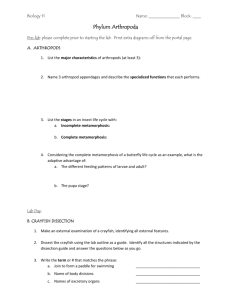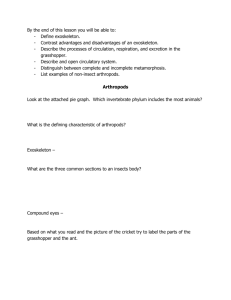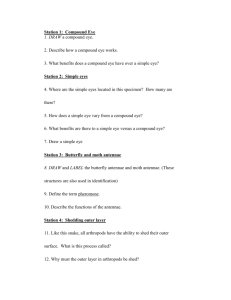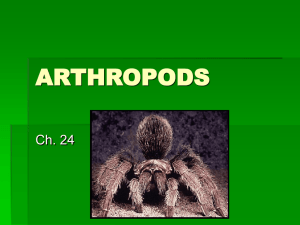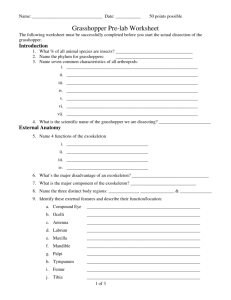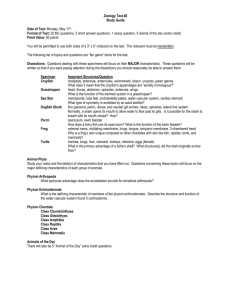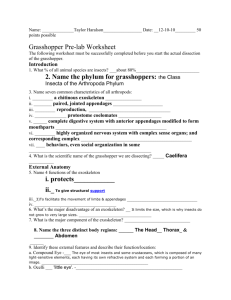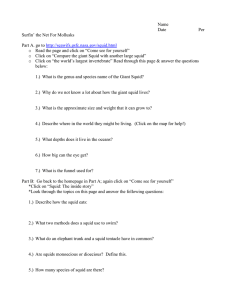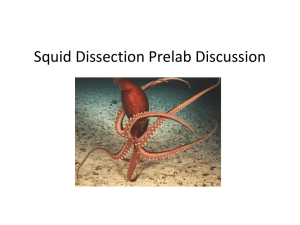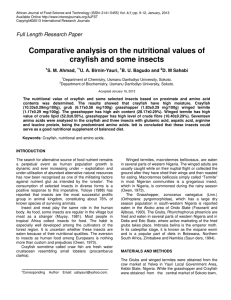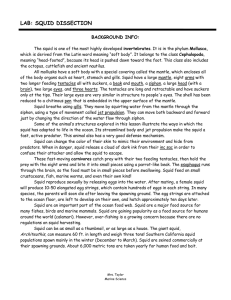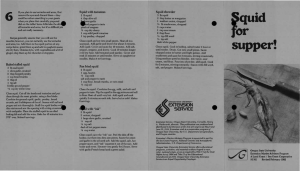Arthropod & Mollusc Study Guide: Anatomy & Characteristics
advertisement
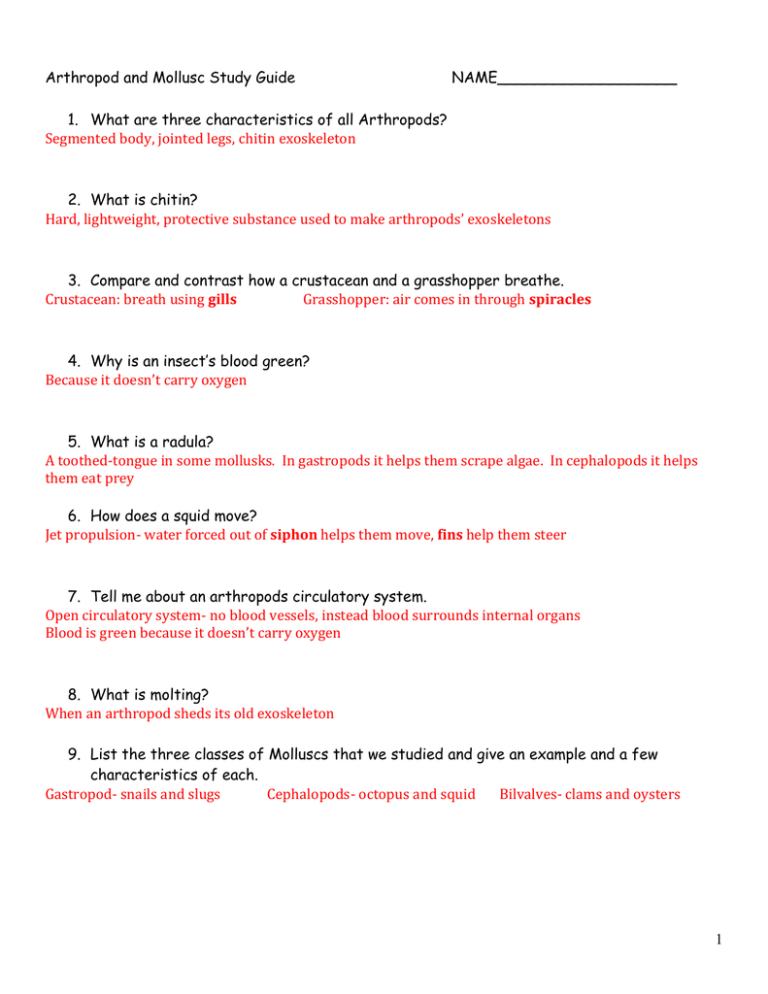
Arthropod and Mollusc Study Guide NAME___________________ 1. What are three characteristics of all Arthropods? Segmented body, jointed legs, chitin exoskeleton 2. What is chitin? Hard, lightweight, protective substance used to make arthropods’ exoskeletons 3. Compare and contrast how a crustacean and a grasshopper breathe. Crustacean: breath using gills Grasshopper: air comes in through spiracles 4. Why is an insect’s blood green? Because it doesn’t carry oxygen 5. What is a radula? A toothed-tongue in some mollusks. In gastropods it helps them scrape algae. In cephalopods it helps them eat prey 6. How does a squid move? Jet propulsion- water forced out of siphon helps them move, fins help them steer 7. Tell me about an arthropods circulatory system. Open circulatory system- no blood vessels, instead blood surrounds internal organs Blood is green because it doesn’t carry oxygen 8. What is molting? When an arthropod sheds its old exoskeleton 9. List the three classes of Molluscs that we studied and give an example and a few characteristics of each. Gastropod- snails and slugs Cephalopods- octopus and squid Bilvalves- clams and oysters 1 10. Know the external anatomy of a: crayfish, grasshopper, squid and internal anatomy of a crayfish and squid. a. Can you tell a male from a female crayfish? b. Can you tell a male from a female grasshopper? c. What special sense organs do they each use (for hearing, seeing, etc) d. What special structures do each use in their excretory systems? Be able to label the following: Arthropod Dissections… Grasshopper Head Thorax Abdomen Spiracles Tympanum Ocelli (simple eyes) Compound Eyes Wings Male vs. Female (look for ovipositor on female) Crayfish See Powerpoints on my website, note sheets, and lab sheets to help with these questions! Squid Dissection… External Mantle Fins Siphon Tentacles Eyes arms Internal Gills Mouth/Beak Esophagus Stomach Caecum Gonads (reproductive organs) Cephalothorax Abdomen Carapace Antennae and Antennules Uropods and Telson Walking Legs Seimmerets Chelipeds Mouth parts (maxilla, maxillipeds, mandible) Male vs. Female (look for the modified swimmerettes in Male) Heart Intestine Green Gland Digestive Gland Stomach 2
